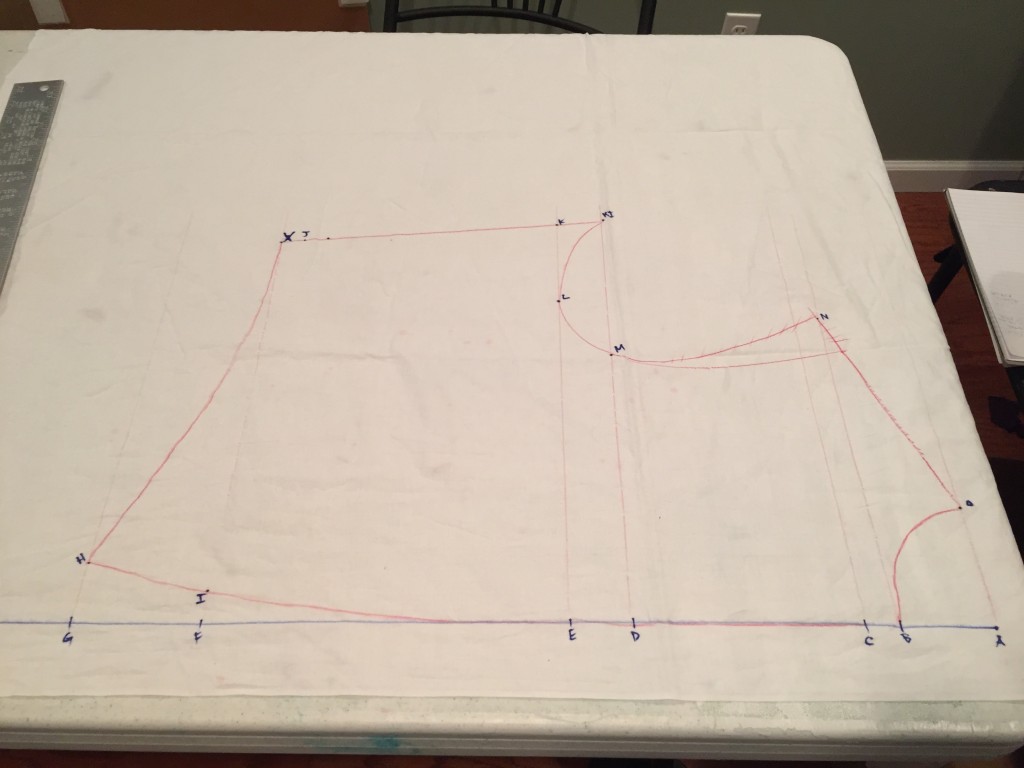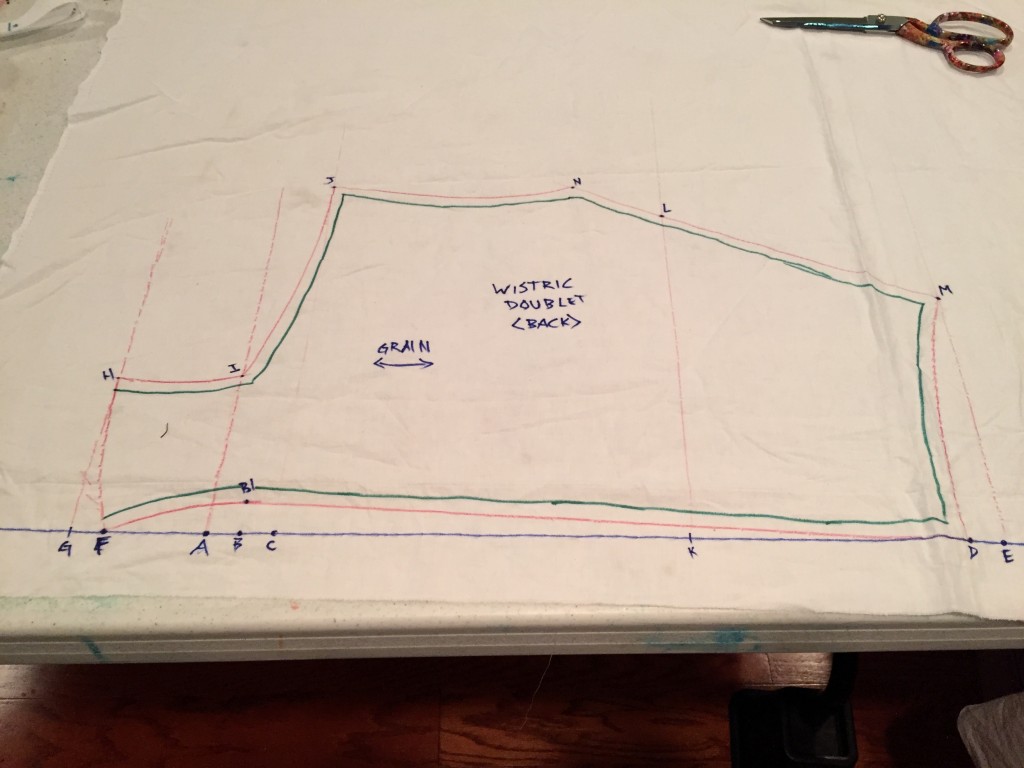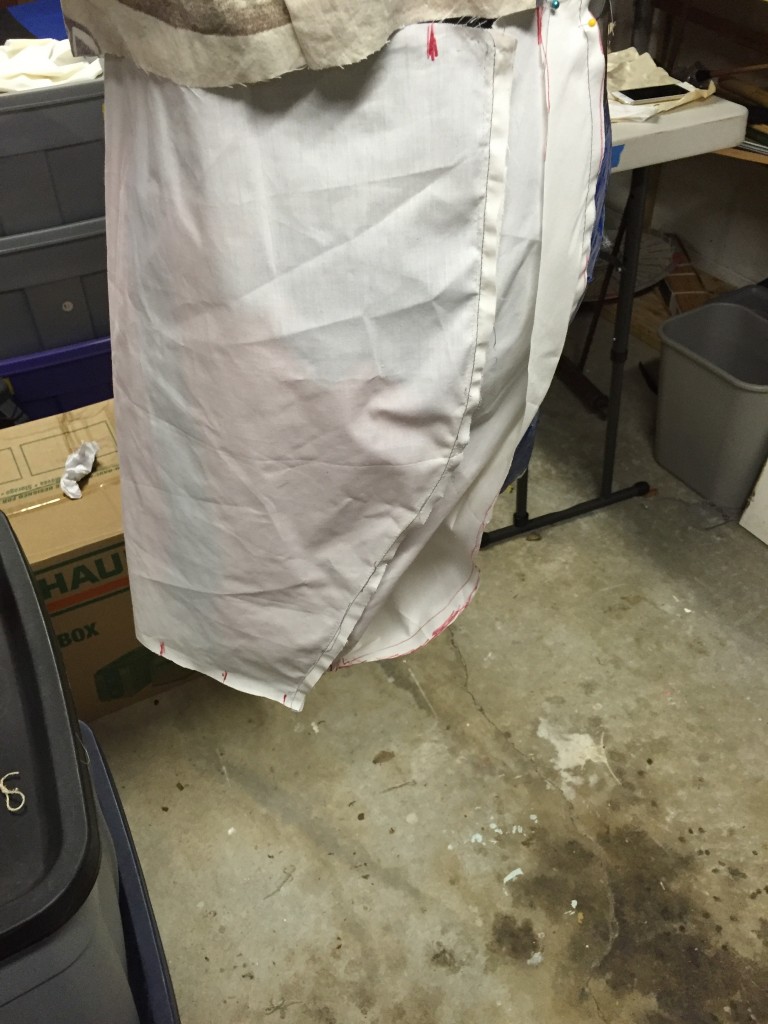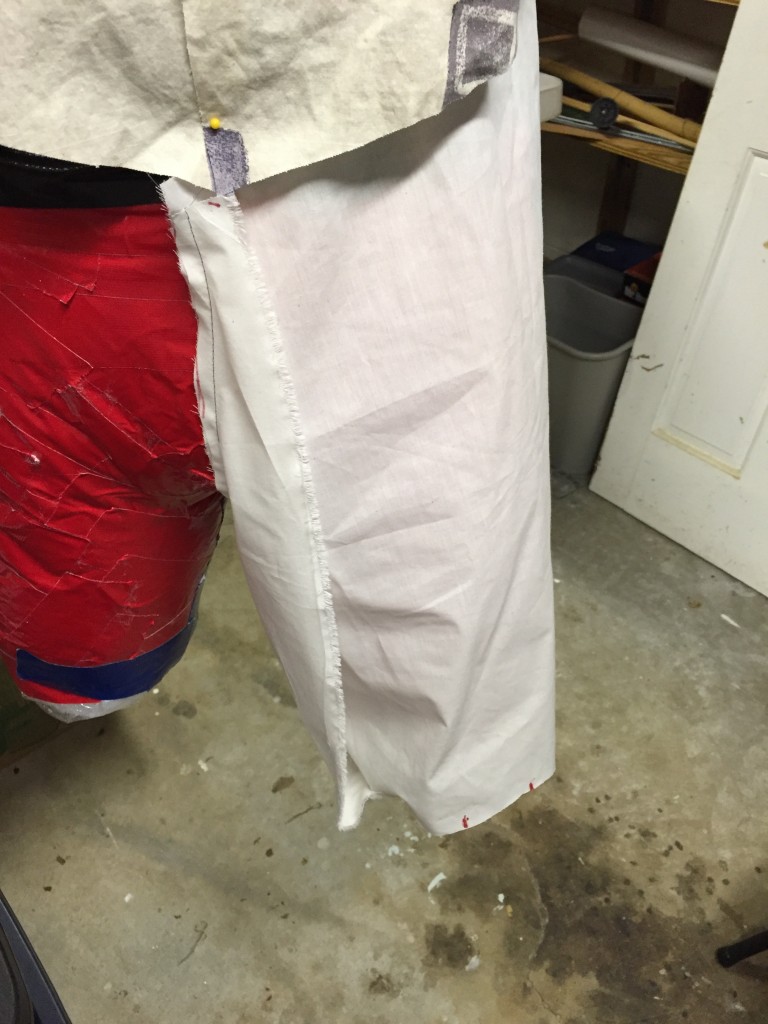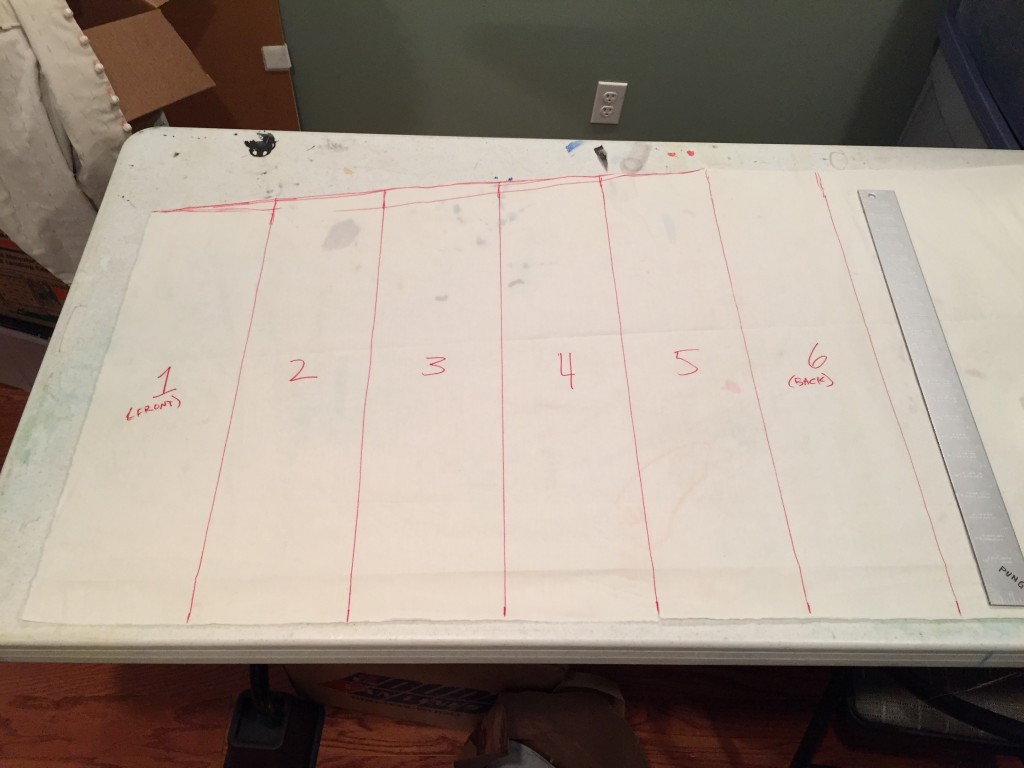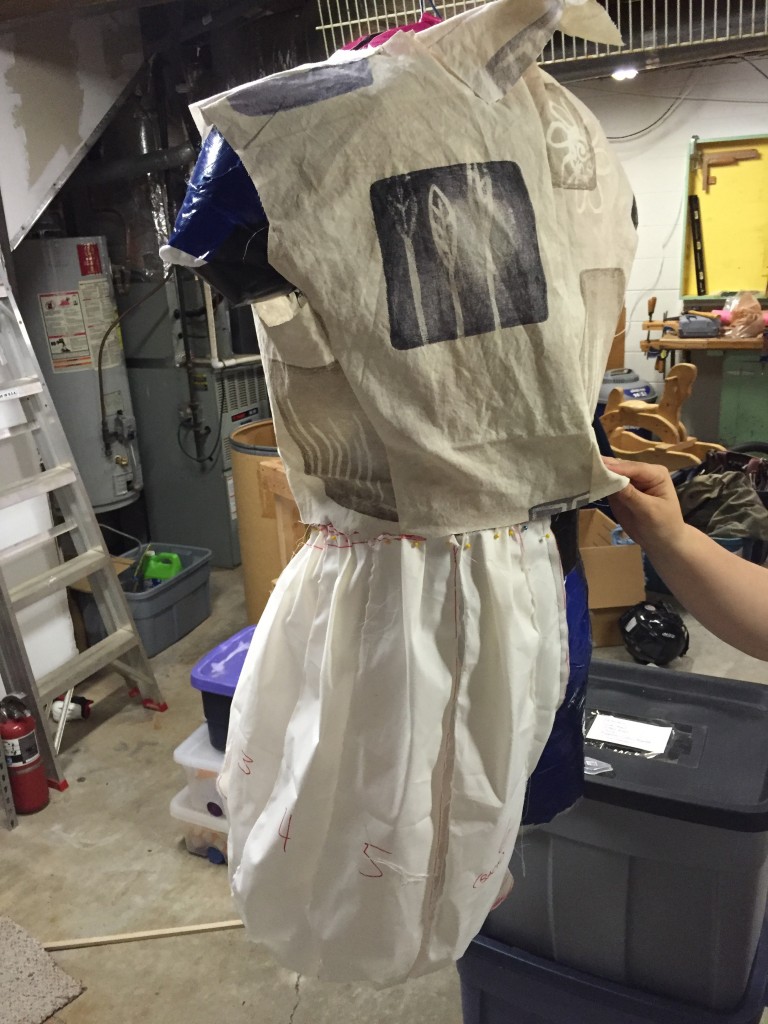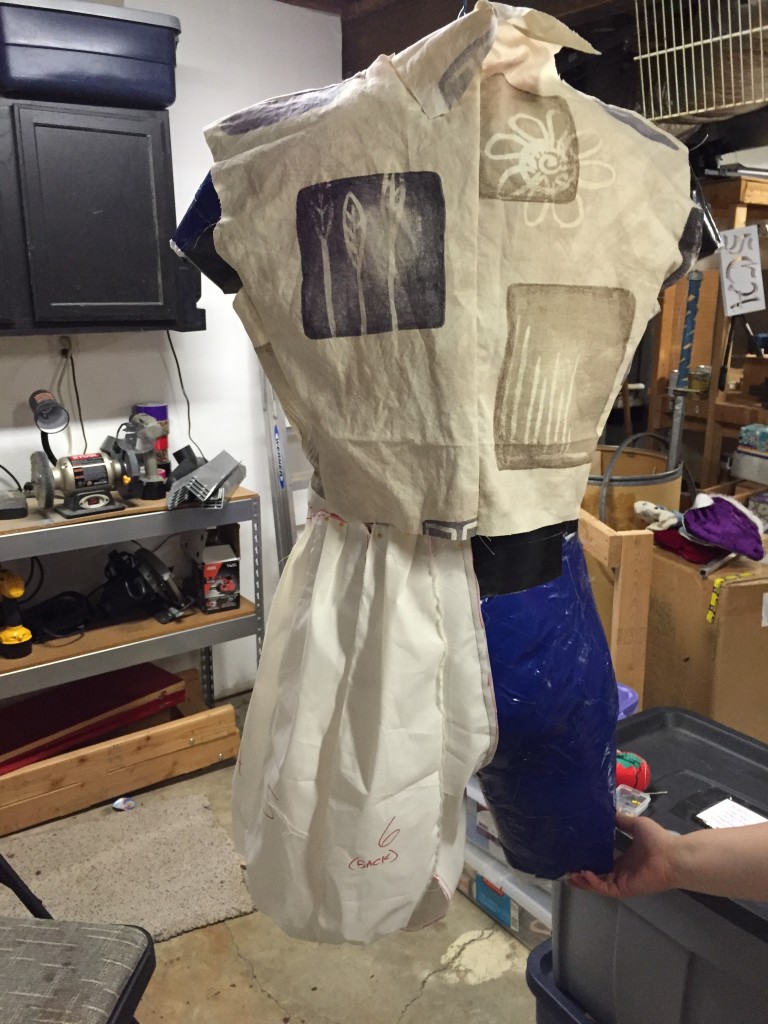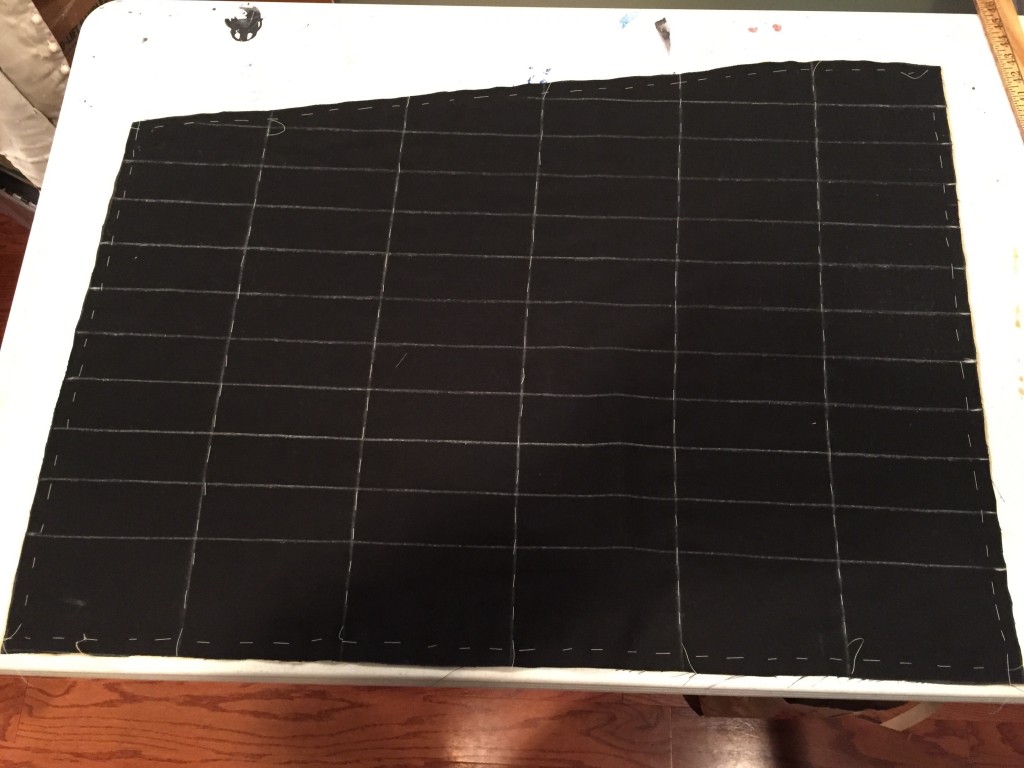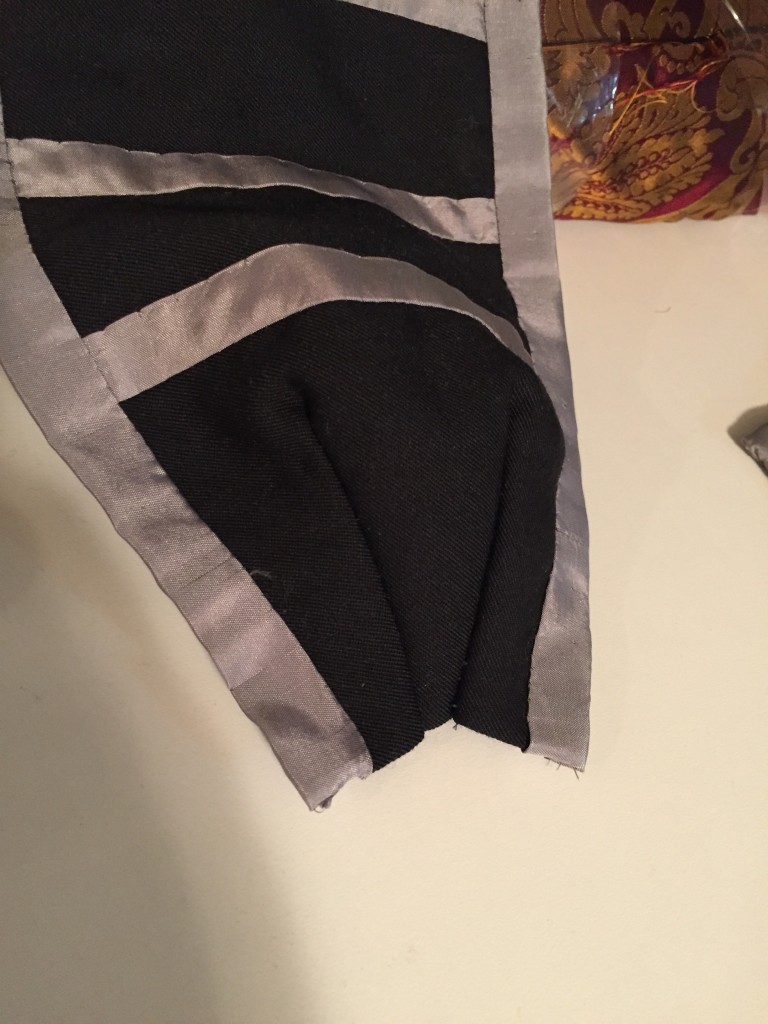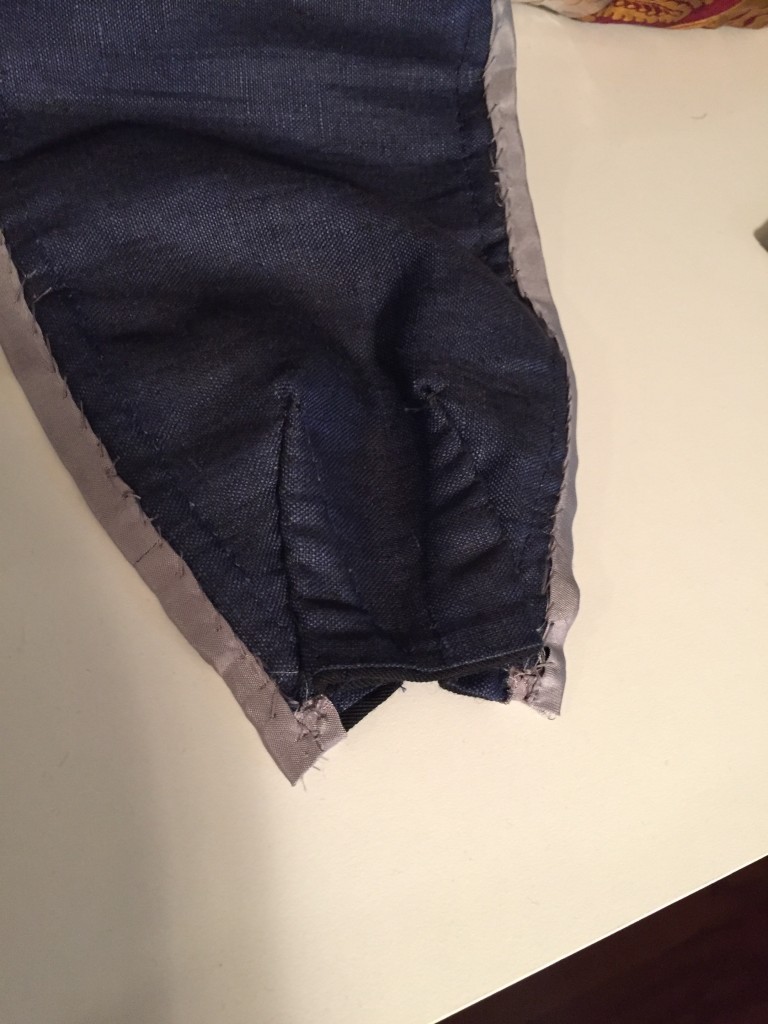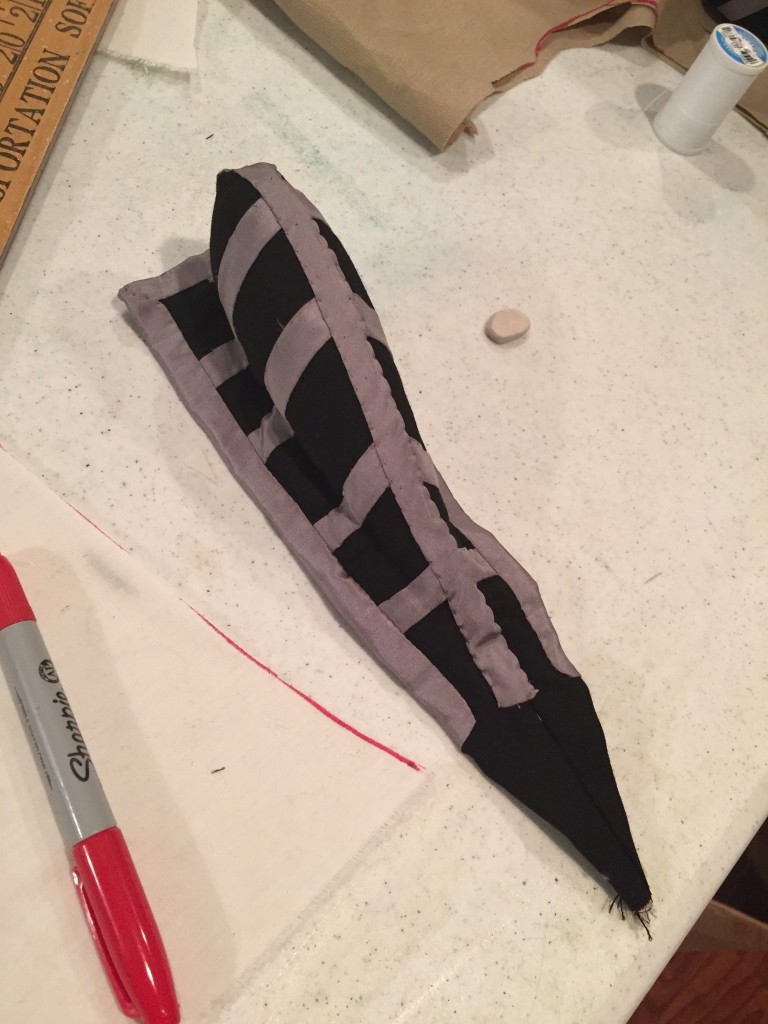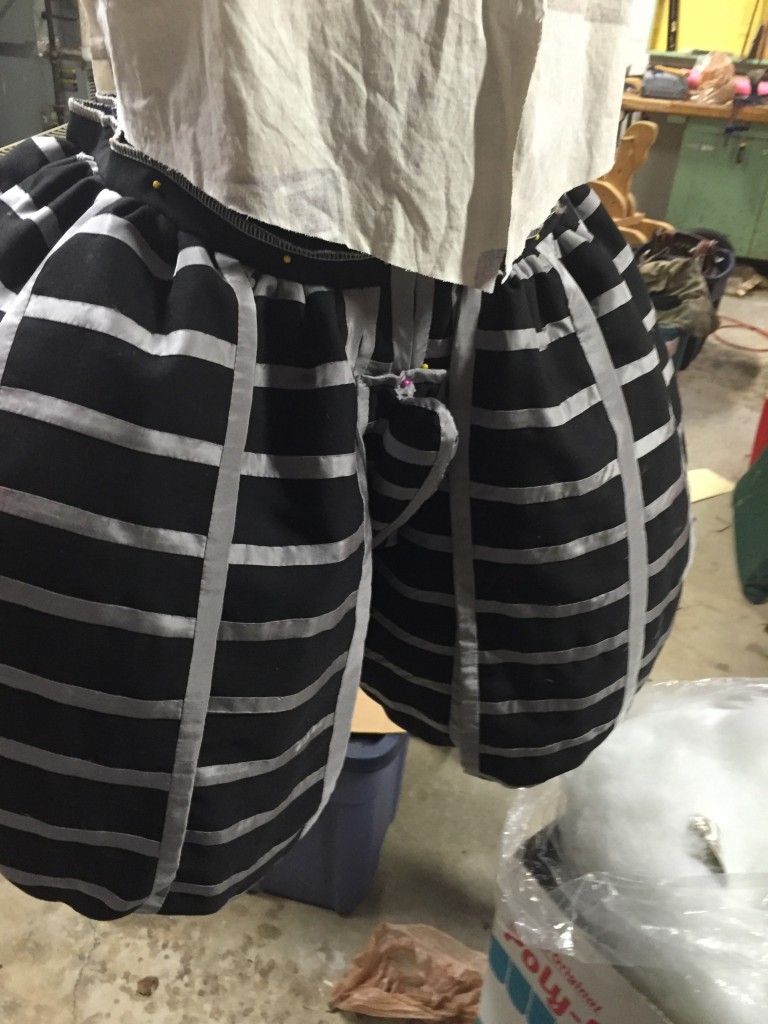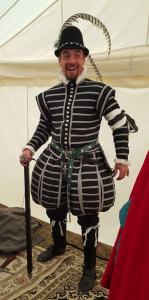
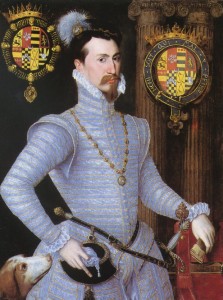 Recently my foster apprentice Wistric was elevated to Master of Defense, and therefore required a very fancy new outfit based on a 1564 portrait of Robert Dudley. With about a four week lead time, I charged Alessandra with heading up the sewing of the suit. She delegated back to me some of the tasks.
Recently my foster apprentice Wistric was elevated to Master of Defense, and therefore required a very fancy new outfit based on a 1564 portrait of Robert Dudley. With about a four week lead time, I charged Alessandra with heading up the sewing of the suit. She delegated back to me some of the tasks.
My first job was to draft the doublet pattern, for which I used the technique described in The Modern Maker. After a couple of fittings and a few minor tweaks, doublet production was able to proceed.
With a doublet mockup in hand and a duct tape double (with legs) hanging in my garage, I was able to pattern the trunk hose. I started with the foundation pattern I used for my Alborghetti suit, raising and narrowing the waistline some but otherwise retaining the same shape. The foundation and doublet mockups were pinned together and tested, and seemed to be a good fit. Next I drafted a set of panes, starting with the panes on the inside of the leg including the crotch seam. This was the part where the body form was invaluable, as I was able to guess at a shape and then alter it in place until it looked right. The rest of the panes were laid out to provide the intended finished girth, taking into account the slope of the waistline.
The foundation was constructed with one layer of a soft linen canvas lined with a lighter weight blue-black linen. The panes were made of black wool trimmed with strips of grey silk, interlined with the canvas and lined in linen. Behind the panes was a lining of black silk taffeta cut in the same shape as the combined panes, sewn together at the inseam.
The majority of the time spent on this project was the application of trim. The straight panes were trimmed together for each leg before being cut apart and bound. Each strip of trim was folded in half, sewn down by machine, flipped over, pressed, and slip stitched in place. Once the panes were trimmed (mostly using straight strips, with a few bias strips for curved trim on the inseam panes), each one received two darts at the bottom to narrow into the leg band and provide structure for the padded shape. A waistband of canvas and wool was attached to the top edge of the foundation after the taffeta lining was gathered and basted in place, then the panes were sewn on with cartridge pleats at the waist and whip stitch at the wool leg band.
Once all the panes were installed and the legs stuffed with polyester batting, the center seam was sewn, pressed out, and covered with a strip of black twill tape. The waistband was then bound at the top edge. The codpiece was drafted based on extant examples, constructed, trimmed, stuffed, bound, and sew into the bottom of the center front opening. Twelve pairs of eyelets were worked in the waistband (along with a matching lacing strip in canvas and linen) and two more pairs of eyelets down the center front opening and a corresponding pair at the top of the codpiece.
The front opening was laced up with fingerlooped cotton points with brass aglets. Some existing woven silk points were used to tie the trunk hose to the doublet at the waist.
This was my first really successful pair of trunk hose, and I look forward to making some new ones for myself using similar techniques.
Drafting the doublet front
Drafting the doublet back
Trunk hose foundation mockup
Trunk hose foundation mockup
Laying out the panes
Testing the panes
Testing the panes
Laying out the trim for the panes
Darts at the bottom of the panes
Darts at the bottom of the panes (inside)
The codpiece ready to install
The (mostly) finished trunk hose

